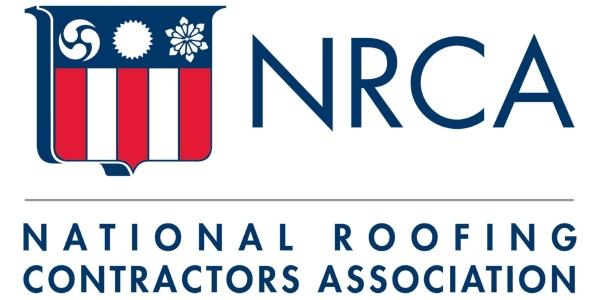Snow Remediation in Roofing

NRCA offers snow remediation hazard analysis.
Many owners of commercial, industrial and residential property in snowy climates of the U.S. are faced with damage or the potential for damage from excessive snow buildup on roofs.
A cubic foot of snow may weigh between 10 and 30 pounds. Loads imposed on buildings by snow accumulation can reach critical limits, and partial or complete collapse of a structure may result. Snow loads also may cause deflection in support members sufficient to damage electrical conduits, natural or propane gas lines, water or fluid piping and other building appurtenances. Significant snow accumulations combined with freeze/thaw temperature cycles or melting caused by sunlight can affect roof system drainage and allow water intrusion to a building.
NRCA offers a snow remediation hazard analysis based on low- and steep-slope exposures, as well as some suggested controls for those hazards.
Many owners of commercial, industrial and residential property in snowy climates of the U.S. are faced with damage or the potential for damage from excessive snow build-up on roofs. A cubic foot of snow (12”x12”x12”) may weigh between 10 and 30 pounds. Loads imposed on buildings by snow accumulation can reach critical limits such that partial or complete collapse of a structure may result. Snow loads also may cause deflection in support members sufficient to damage electrical conduits, natural or propane gas lines, water or fluid piping and other building appurtenances. Significant snow accumulations combined with freeze/thaw temperature cycles or melting caused by sunlight can affect roof system drainage and allow water intrusion to the building. Following is a snow remediation hazard analysis based on low- and steep-slope exposures and some suggested controls for those hazards.
Steep-slope (greater than 4:12)
The primary concern for steep-slope roofs is eliminating or preventing ice dams. Ice dams occur when snow on upper roof surfaces melts because of heat loss from the building, sunlight or warmer ambient temperatures and runs down the roof only to refreeze at cooler overhanging eave surfaces forming a dam that prevents water from draining from the roof. Water may then back up under roof shingles, tiles or other materials and enter the building. Snow load is not ordinarily a major concern in steep-slope structures.
Hazards
• Skylights
• Tripping hazards like vent stacks, cable lines
• Unstable ladder access or unavailable ladder tie-off points
• Fall protection, lack of anchor points or inability to anchor without roof damage
• Pedestrian access to public or multi-unit, steep-slope structures during periods of snow removal or if snow slides are possible.
• Metal shovels may damage roofing materials.
• Homeowners or untrained personnel attempting to clear snow buildup
• Worker exposure to cold, snow and ice
Controls
• Use extension snow rake for 3-4 feet (up from the fascia) of snow removal from eave—worker remains on ground. Plastic tools may pose less chance for damage to roofing materials.
• Obtain interior access to structure to determine skylight locations.
• Flag hazardous vents or lines prior to snow season or take roof photos to locate obstructions
• Industrial or agricultural steamers used by workers on ladders may be effective for removing ice dams that have formed without damaging roofing materials.
• Gutters must be unobstructed to facilitate water runoff to prevent dams.
• Permanent, weather-resistant fall protection anchors should be incorporated into structures susceptible to critical snow buildup and must be engineered to allow easy lifeline connection under hazardous weather conditions.
• Improvised temporary anchor points may provide worker protection if permanent anchors are not available or if “first-man-up” hazards cannot be eliminated.
• Temporary canopies over entrances and exits may be needed or some access points may need to be closed if unsafe because of snow removal operations or if dangers from snow slides exist.
• In some instances, chicken ladders (crawling boards) may be useful as work platforms if they can be secured over the ridge
• Workers should dress properly in layers with warm coats, shirts and pants along with good gloves and a hat. Sun protection may be needed on many days.
• Roofing workers trained in roof hazards, fall protection equipment and set up and snow remediation hazards and procedures are the most qualified workers in the construction industry to perform this roofing work resulting from snow buildup.
Low-slope roofs (4:12 or less)
Weight is the primary concern for low-slope roofs. Structures should be designed to withstand expected environmental “live” loads so that they are able to hold the weight of even extraordinary accumulations of snow.
Hazards
• Skylights
• Tripping hazards like vent stacks, conduits, drains, piping
• Inoperable roof hatches
• Location of structural supports is critical in snow remediation efforts—as snow is removed or relocated, stress may be applied to other support members from such activity
• Unstable ladder access or unavailable ladder tie-off points
• Fall protection, lack of anchor points or inability to anchor without roof damage
• Snow blockage of unit heaters or rooftop HVAC units
• Public access to low-slope structures or surrounding property during periods of snow removal
• Employee and public entry to structure critically loaded by snow buildup
• Metal shovels and equipment parts may damage roofing materials.
• Untrained personnel attempting to clear snow buildup
• Deflection of support members under snow load may break or damage, electrical conduits, natural or propane gas lines, water- or fluid-carrying pipes and other building appurtenances
• Worker exposure to cold, snow and ice
Controls
• Obtain interior access to structure to determine skylight locations.
• Flag hazardous drains, vents or lines prior to snow season or take roof photos to locate obstructions
• Snow should be cleared from roof hatches promptly from the roof side to allow a more safe access for workers.
• Gutters and drains must be unobstructed to facilitate water runoff.
• Temporary canopies over entrances and exits may be needed or some access points may need to be closed if unsafe because of snow removal operations.
• Building access may need to be restricted until snow loads are reduced to a safer level.
• Permanent, weather-resistant fall protection anchors should be incorporated into structures susceptible to critical snow buildup and must be engineered to allow easy lifeline connection under hazardous weather conditions.
• Warning lines and safety monitors may be effective in those removal situations where anchor points are unavailable and workers are suitably trained in the elements of that fall protection system.
• Plastic shovels may pose less chance for damage to roofing materials. Snow blower blades should be raised as high as possible to avoid membrane damage. Track systems on snow blowers may put less stress on roofing membranes.
• Engineer or competent person must determine snow loads and proper removal protocol so that snow load is removed without stressing support members. Snow remediation often involves only partial removal of snow, for example, by establishing “wind rows” where suitable rows of snow have been removed from the roof to relieve stress.
• Tarps or skid boxes used with a crane or all-terrain forklift may aid snow removal by off-loading or blowing snow into tarps or boxes that are not in contact with the structure.
• Ground monitors can assist in directing pedestrian traffic away from removal staging areas or to designated building access points.
• Workers should dress properly in layers with warm coats, shirts and pants along with good gloves and a hat. Sun protection may be needed on many days.
• Roofing workers trained in roof hazards, fall protection equipment and set up and snow remediation hazards and procedures are the most qualified workers in the construction industry to perform this roofing work resulting from snow buildup.
• Snow remediation must be a planned job activity with a thorough analysis of hazards, control methods, work procedures, assignments and structural review discussed at a meeting of all involved in the process prior to starting the removal.
Learn more about the NRCA.























Comments
Leave a Reply
Have an account? Login to leave a comment!
Sign In